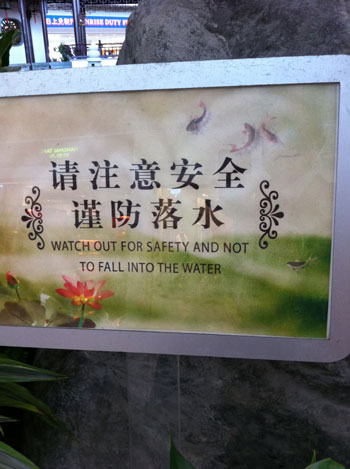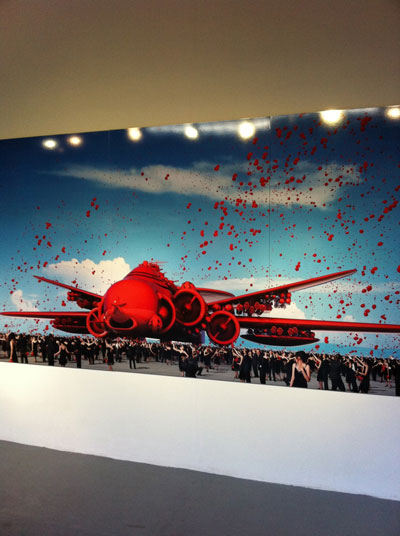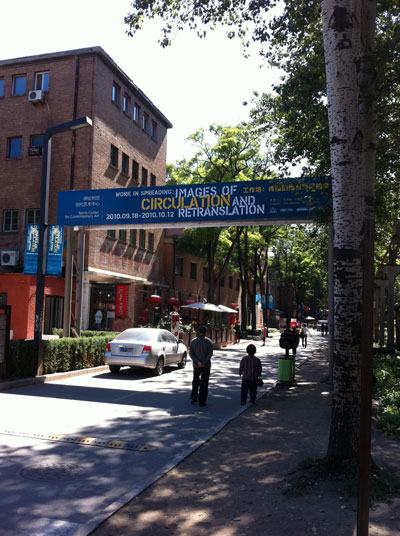The Anti-Gladwell: Small Change Indeed
 Friday, October 1, 2010 at 9:56PM
Friday, October 1, 2010 at 9:56PM I have always wondered why Malcolm Gladwell was such a successful writer. He has a knack for taking simple, obvious phenomena and turning them into stories. “Outliers” is an interesting book about the many elements that have to come together for someone to be successful or for someone to fail. It is well written, but left me as all of Gladwell’s books do, with the sense that he skims the surface of events and has the rather uncomplicated aim of informing not probing. He is the quintessential postmodern writer. Factoids are personalized into stories, claims are made and dropped, personal narratives are unveiled and in all of this, significance is drawn from the trivial in the blink of an eye. He is very good at pastiche and as a bricoleur he knows how to bring different experiences and events together that often don’t seem like they should be linked. His books are soothing, neither brilliant nor banal.

Use a QR scanner app on your iPhone or Blackberry to retrieve more information about Gladwell.
It should therefore not be surprising that he would write an article in the New Yorker about a genuinely new cultural phenomenon like social media. After all, social media pose a challenge to writers like Gladwell. Social media as a term probably describes too much because all forms of communications are social. Twitter and Facebook are hardly the essence of social media and that is all that Gladwell focuses on. But, I am getting ahead of myself.
Gladwell is a good polemicist. So, in the New Yorker article he sets up a simple opposition, the civil rights movement of the 1960’s as an agent of massive change and Twitter and Facebook as weak networks, amorphous by design and therefore unlikely to be agents of genuine social transformation — not that either Twitter or Facebook were ever built to be change agents, but a polemicist does not care too much about these distinctions.
The civil rights movement was the product of many events and many people working and dying for change. The history of that movement is very complicated so for a moment, let me concentrate on Galdwell’s use of the Greensboro sit-in in 1960 which is often described as one of the key events in the growth and development of the civil rights movement. No less an authority than Taylor Branch whose history of that period (Parting the Waters and At Canaan’s Edge) runs to two volumes and over two thousand pages comments on the rather weak way in which the protest began. “No one has time to wonder why the Greensboro sit-in was so different. In the previous three years, similar demonstrations had occurred in at least sixteen other cities. Few had made the news, all faded quickly from public notice…” (Page 272 of Parting the Waters)
Branch goes on to talk about the fact that the small group of protestors had no tactical plan or goals and they were not prepared. The spontaneity of their protest and the fact that they decided to sit in the wrong place (reserved for whites) in a café in Woolworth’s was the result of deeply felt emotions about the racist way in which black people were being treated and about the built-in racism of the US.
Their protest was open-ended and the networks of activists working in the South became aware of what they were doing through the radio and telephone and as Branch describes it, ‘parallel lines of communication’. In other words, the message traveled without needing to be framed and shaped into a particular form. There was no centralized control or authority. People found out by whatever means they could.
Gladwell doesn’t mention this because it would show how similar the networks of the sixties were to social media today. I assume that had he done the research, Gladwell would have discovered that newspapers both traditional and informal were also key arbiters in the development of the movement and that the growth of television as a mass medium closely parallels the increasing breadth and depth of people’s commitment to getting involved. Notice that I refer to this period, as does Gladwell as a movement. Unpack that word for a moment and you will discover that “movement” is at the core of what Martin Luther King pursued. He wanted people to spontaneously rise up against injustice. He knew that if he over-organized both the protest events and the speeches, people would not move as quickly or spontaneously to join together. Movements are fluid. They are not political parties.
Sounds familiar, doesn’t it? Social media are very fluid because that is how large communities of shared interest form and grow. For Gladwell, organized groups drive change with carefully built hierarchies. That is precisely what we have with traditional political parties but Gladwell doesn’t seem to care about the obviousness of the connection between the political stasis we are in at the moment and the hierarchies he celebrates in his essay. Worse, in a period when a new generation is discovering how powerful they can be if they cluster together on certain issues (he makes no reference to the environmental movement), he says, “we seem to have forgotten what activism is.”
Clearly, Gladwell doesn’t understand nor has he examined the heterogeneous nature of social media, their diversity and also the multitude of different ways in which social media are being used not only to promote change, but also to act on and respond to social issues. One can only imagine how wonderful it would have been for social activists working with King and others, if they had been able to utilize media they controlled as opposed to having to fight for a place on traditional news broadcasts.
Gladwell doesn’t discuss the grassroots nature of social media instead he conflates Facebook and Twitter with something far larger than what these two companies represent. Polemicists like Gladwell are fond of using simple binaries to explain complex phenomena. He says the strong ties of the people in the Civil Rights Movement held them together. He compares this to the weak ties of social media. But, the binary is wrong to begin with. Social media are neither strong nor weak. The ties that bring people together are thankfully more often than not, unpredictable. Sure, there is superficiality in all of this and of course Twitter restricts what can be said to a few sentences. But, this is no different from the restrictions of any mass medium with the crucial difference being that Twitter is produced by its users and not Rupert Murdoch.
Taylor Branch tells the interesting story of the historic day (July 10, 1962) when television images ‘leaped’ across the Atlantic ocean for the first time using the Telstar satellite. As it happens, Martin Luther King and Ralph Abernathy were in jail in Albany, Georgia and one has to wonder what would have happened if a million people had twittered about the imprisonment.
Social media are not a panacea. In fact, social media are hard to define because an increasingly complex communications environment frames so much of what we now do. However, networks are not going to go away (Gladwell completely misunderstands the history of networks, but that will have to be the topic of another essay), rather we need to understand how they work by actively participating in their construction and use. The challenge is to work with social media networks to deepen the manner in which users connect to each other. We are at the very early stages of the formation of new types of communities driven by common interests, conflicts and often utopian desires. Polemicists like Gladwell have nothing to add to this debate.







